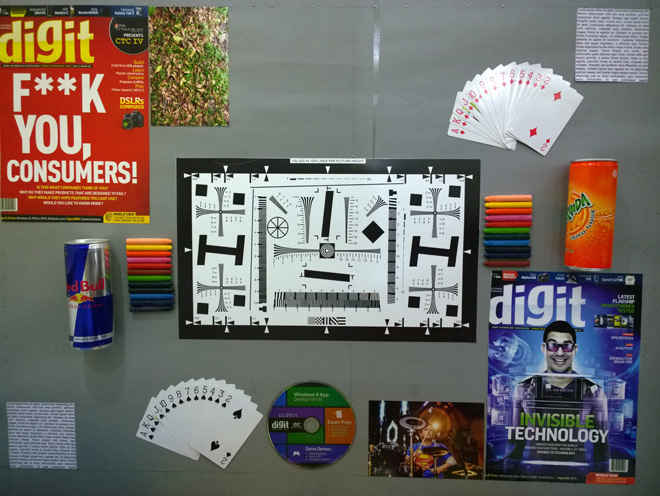Camera Comparison: Nokia Lumia 1020 vs. Sony Xperia Z1
When there are two big shots in the camera industry vying to replace your point and shoot, what do you do? You put them through a series of tests, to figure out which camera does well in which situation, which is exactly what we did.
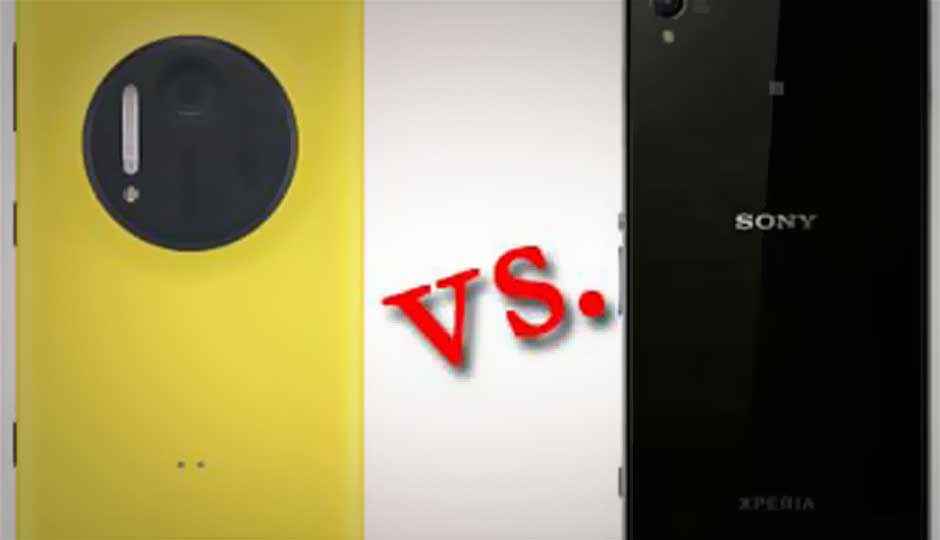
Its Diwali season and you’re out looking for things to splurge your hard earned cash on. Of course, nothing says fancy like owning the latest and greatest mobile phone that’s there in the market. Sure you could get a Vertu, but what good would that do for you this Diwali? Why not a phone that’s got GOOD imaging prowess? Something like the Nokia Lumia 1020 maybe? But wait! It's not the only top-dog in town anymore, with the Sony Xperia Z1 also sporting some pretty insane camera tech. If you’re looking for a solid camera phone, but can’t decide which, we’ve got the answer for you right here. However, before we dive into the depths that this comparison commands, we must make it clear that if you’re a Windows Phone or an Android fanboy, then the choice is clear for you. This writeup is for those who’ve got an open mind about the ecosystem they choose to call their own.
 Survey
SurveySpec-tacular Dominance
Let’s face it, we love our numbers. If there was a phone with more cores than you have fingers, you’d go right out and buy it, with total disregard for anything else. Toss in a healthy bit of RAM too and you’re probably salivating all the way to the store. So we’re going to dish out some real number porn for you right here.
| Feature | Nokia Lumia 1020 | Sony Xperia Za |
| Sensor Size | 1/1.2 inches | 1/2.3 inches |
| Resolution | 41 MP | 20 MP |
| Lens Branding | Zeiss | Sony G |
| Lens Construction | 6 elements | – |
| Focal Length | 26mm | 27mm |
| Aperture | f/2.2 | f/2.0 |
| Optical Image Stabilization | Yes | No |
As you can see, the competition is tough. The Lumia 1020 has a bigger sensor, but also a lot more pixels, which brings the pixel pitch down to roughly 1.1 microns. The Sony Xperia Z1 has a smaller sensor in comparison, but the smaller number of pixels also place the individual pixel size at roughly 1.1 microns. However, the Z1 has an aperture that’s brighter by a third of a stop in comparison to the Lumia 1020 (f/2.0 vs. f/2.2 respectively) which would make one think that the Z1 should do better in low light. But does it really? The Lumia 1020 has double the resolution of the Xperia Z1’s, so does that mean that the images are also twice as detailed?
In Studio Comparison
Numbers really aren’t everything in today’s world. While the hardware may be out of this world, it can often get crippled by poor software, and we have seen that happen in the past. In order to take advantage of the Lumia 1020’s sensor, Nokia had to develop their own camera app as Microsoft doesn’t allow any changes to the Windows Phone OS. The Nokia Camera app (Pro cam and Smart Cam combined into one) allows you to leverage the full potential of the large senor within this camera, with the software working its magic when it comes to noise reduction and colour reproduction. The Sony Xperia Z1’s stock camera app happens to be standard across the Z1 and the Z Ultra, and being very very similar to the Xperia Z.
Now we shot our studio test scene with the two cameras in their full resolutions. Interestingly, the only way the Sony Xperia Z1 will shoot at the full 20 megapixel resolution is if you switch the camera to manual mode. This is incredibly cheeky on Sony’s part, as those who are not very tech savvy would possibly not be able to figure out why their images were of a lower resolution, or even how to get the images to be of the full 20 megapixel resolution.
Moving ahead, we shot our standard studio test that has an ISO standard resolution chart to measure the resolving power of the cameras along with various other targets to measure colour reproduction, text legibility and even edge sharpness. What you see above is our entire Test Scene
In terms of pure resolution, the Lumia 1020 is able to resolve far more lines per millimeter in comparison to the Xperia Z1. The 1020 can resolve up to 9 per millimeter, while the Xperia Z1 starts topping out around 7. The same behavior is noticeable even in vertical resolution, where the Lumia 1020 tends to hover around the 9-10 mark while the Xperia Z1 stays closer to 7-8.
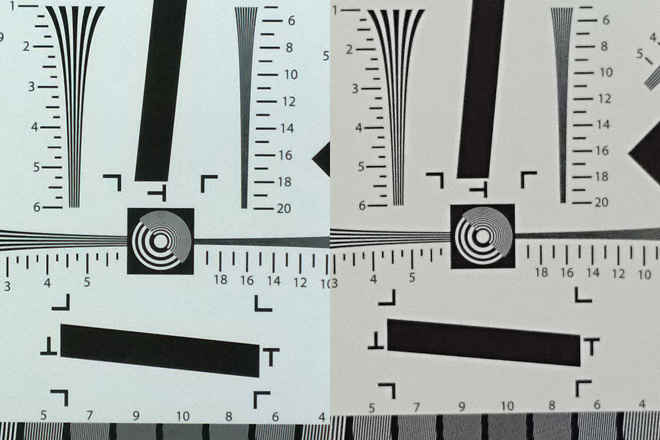
Center Shaprness: Nokia Lumia 1020 on the left, Sony Xperia Z1 on the right
Horizontal Resolution: Lumia 1020 on the Left, Sony Xperia Z1 to the Right
In terms of edge sharpness, however, the Xperia Z1 has the Lumia 1020 beat, as you can make out from the text samples we placed on the edges of our test scene. However, a little further digging also reveals that the Z1 tends to apply a very aggressive sharpening algorithm to its images, so aggressive that it tends to generate salt and pepper noise. You can see what we’re talking about in the image below. While the sharpening does bring out the text incredibly well in comparison to the Lumia 1020, that appears to be soft, it does have some downsides, which we will cover a little further down.
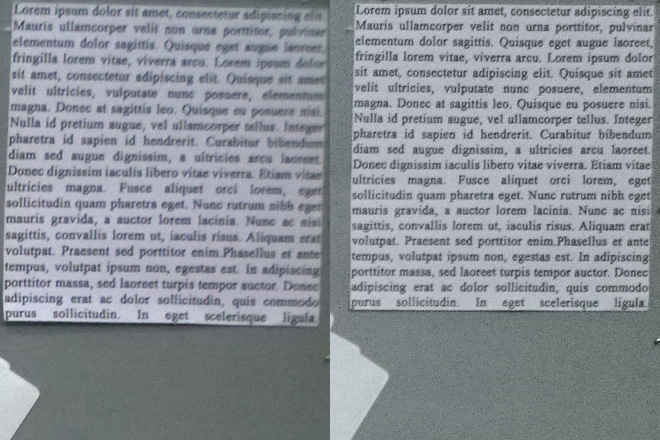
Corner Sharpness: Lumia 1020 on the left, Sony Xperia Z1 on the right.
In terms of colour, it is clear from the studio samples that the Lumia 1020 has a tendency to be biased towards cooler tones, while the white balance on the Xperia Z1 tends to lie on the warmer side. This being said, both the phones allow for setting of custom white balance from a number of standard presents, but you can’t actually define a user-based white balance. While presets will have you covered for about 90% of the shooting conditions, if you ever find yourself in a situation where there is mixed lighting, a user-based custom white balance setting can really be a life saver.
In terms of colour, we noticed that the Xperia Z1 had a hard time creating an image where our dark green crayon and the black one next to it didn’t blend in together. The Lumia 1020 on the other hand maintained a very detailed separation. The other problem we noticed with the Z1 was that the over-sharpening was causing grain even in colour, which is easy to mistake as noise. While this isn’t such a major issue if you’re looking at the photos on your computer screen, or even uploading them to social networks, where it can be troublesome is if you try to make large prints of that gorgeous sunset you shot a in the hills on your last family trip.
Sharpening Artefact: Lumia 1020 on the Left, Sony Xperia Z1 to the Right
Looking at the bottom right corner of the image, where we have one of our covers, what becomes apparent is that the Lumia 1020 has a tendency to render more natural images when compared to the Z1. The Z1’s over sharpening causes the text to break out in parts, while the Lumia 1020’s large sensor and pixel count manage to not only keep the text intact, but also very readable.
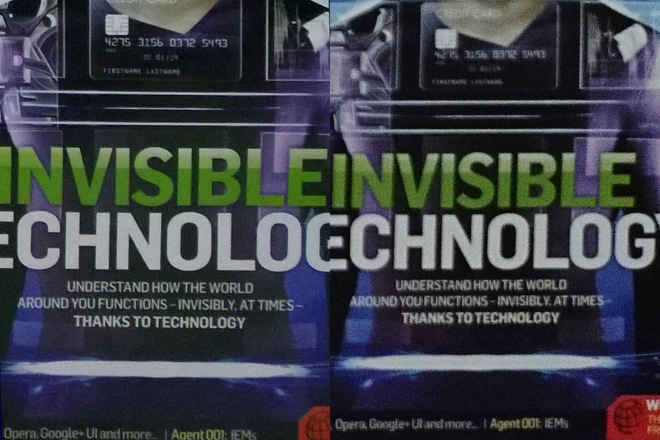
Bottom Right Edge: Lumia 1020 on the Left, Sony Xperia Z1 to the Right

Bottom Edge: Lumia 1020 on the Left, Sony Xperia Z1 to the Right
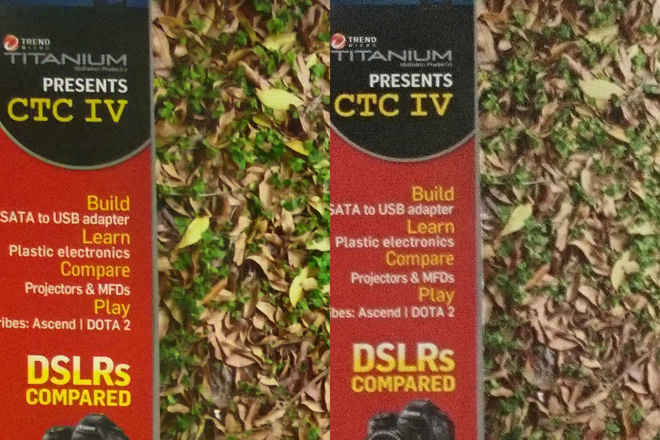
Top Left Edge: Lumia 1020 on the Left, Sony Xperia Z1 to the Right
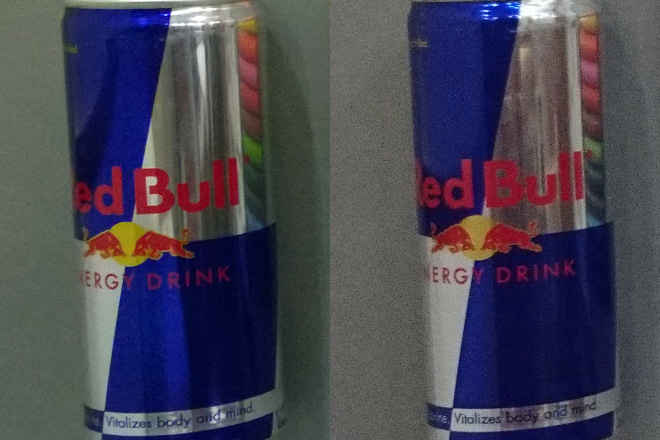
Measuring the Reds and the Blues: Lumia 1020 on the Left, Sony Xperia Z1 to the Right
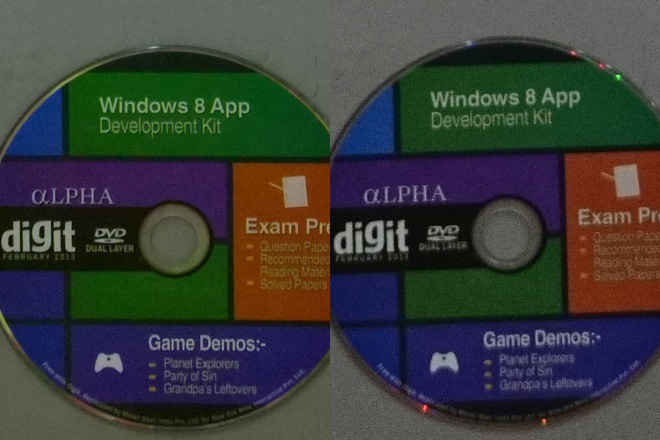
Bottom Edge: Lumia 1020 on the Left, Sony Xperia Z1 to the Right
Video
Of course, if you’re going out to paint the town red, there is a chance you would like to have shenanigans documented in the video form too. The Lumia 1020 and the Z1 both are incredibly good when it comes to video recording, owing to their large sensors. The Lumia 1020 fares better though when it comes to audio recording thanks to their Rich Recording Technology, which uses a bunch of software techniques to normalize the audio, remove the hiss and wind and reduce noise before encoding the audio stream. It also uses microphones which are capable of recording high pressure sound sources up to 140dB, which is the amount of noise you get when a jet takes off.
If you’re out at a concert and want to shoot the band on stage, the Lumia 1020 is a much better fit. The rich Recording technology paired up the Optical Image stabilizer in the lens will allow you to capture footage that is not only somewhat stable (unless you’re jumping around in a moshpit), but will also give you clean audio. The Sony Xperia Z1 in comparison only brings software based stabilization to the video, which doesn’t quite compare to the optical system in the Lumia 1020.
Other Thoughts
There are some aspects about the two phones that while not imaging based, do contribute directly to the shooting experience and how the images turn out. The Lumia 1020, for example, has a very slow camera, one which takes a good second and a half to just start up and then another second and a half to save the image after it is shot. The Xperia Z1 in comparison has a nearly non-existent startup time and there is absolutely no shutter lag, while taking photos or between shots.
While the Xperia Z1 has its pros, there is one major drawback to the phone. The camera does not produce a 20 megapixel image in any shooting mode except for manual. What the logic is behind such a move escapes us, but whatever it is, it seems incredibly unfair. Many users don’t bother to checking the settings of the camera, and even when they do, it would escape them to check the resolution settings because the option just doesn’t exist. The only way to choose between various resolutions and aspect ratios is if you shoot in Manual mode. Shooting in all manual might be a little daunting for many users, so it seems unfair to give them less than half the original resolution, just because they want to have a hassle free shooting experience.
Conclusion
So which phone should you buy? They’re both expensive, with Nokia commanding you spend Rs. 49,990 for the Lumia 1020 and Sony pricing the Z1 at Rs. 44,990. For full disclosure, we have to say that both the camera phones did a surprisingly good job at taking photos in our testing and just because one is better than the other in some regard or the other, doesn’t mean the lesser one is bad. It’s just a matter of choosing between the better of two…goods.
If you’re a stickler for detail and a purist who likes his/her images as natural as possible, then the Lumia 1020 is for you. It has the resolution and the sensor size to capture great detail and with Nokia bringing DNG RAW support to the phone in the coming weeks, this device is going to be a photography powerhorse. What you will have to live with is the fact that the Nokia Pro Cam app is a little slow between shots and can cause you to lose your precious moments. However, if you’re the kind who loves to put time and thought into composing each photograph, then you’re actually going to love the kind of extensive control this app will give you, allowing you to shoot amazing, detail rich images.
If you’re not a serious photographer, but love to make sure your adventures are well documented, basically if you are the kind of person who whips out his camera at the drop of a hat, the Xperia Z1 is for you. The incredibly fast startup time and virtually no lag between shots ensure that the Z1 will keep firing its shutter as fast as you can push the shutter button. The images from the Xperia Z1 are quite impressive in their own right, and why shouldn’t they be? The camera assembly in the Z1 is the same you’d find on many of Sony’s sub-18K point and shoot cameras, and those point and shoot cameras often make their way into most of our top-10 lists!
All in all, the Lumia 1020 is the phone of choice for those who are absolutely clear that they want the best images a mobile phone can give. The Lumia 1020 is king in that regard, but the Xperia Z1 is no commoner. If the Lumia 1020 is King, the Z1 is most definitely the Royal Minister. It’s a competition of impeccable quality vs. decent quality but immense speed. You know your needs, and you know which camera excels where, so take your pick!
Swapnil Mathur
Swapnil was Digit's resident camera nerd, (un)official product photographer and the Reviews Editor. Swapnil has moved-on to newer challenges. For any communication related to his stories, please mail us using the email id given here. View Full Profile
